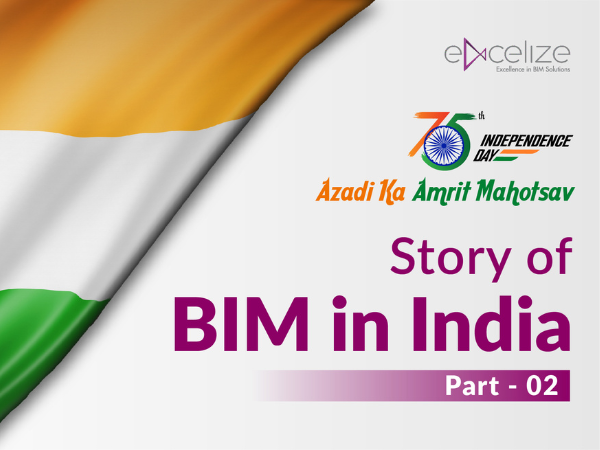Part 2: Foundation of BIM (2008-2012)
August 10, 2022

Phase 1: Mumbai Airport – 2008

This mega structure is spread over an area of 5 million sq. ft. The complex design was fully coordinated using 3D BIM models. Excelize team was entrusted with the challenge of showcasing the benefits of BIM adoption for coordination. A Proof-Of-Concept (POC) was conducted for a small area before the work on the entire terminal was done.
No BEP was generated, no standards were defined and documented, and only BIM goal was to generate coordinated 2D drawings from clash-free models.
Observations:
- The input data was incomplete with inadequate information. Using these at site would have resulted in a lot of on-site decision resulting in potential delays.
- A lot of clashes were detected and resolved using the model. This ensured that
- Minimal decisions were taken on site
- No undocumented changes at site
- Very little rework at site thus time and cost overruns were minor
- Every designer had his/her perspective for resolving the clashes. Excelize team took initiative to document the rules for clash resolution that could be shared with the design teams, and this led to the first piece of standardization
- Value engineering exercise was conducted in coordination with design team at site, which involved re-design and second round of clash resolution.
- Clash free areas and models were produced which the site team was not capable of viewing. Lack of trained staff, infrastructure (hardware/software) and resistance to accept change were some of the barriers to implementation. At the end of this phase, walkthroughs were generated from the model which the team used for inspection during installation.
Phase 2: Star rated Hotel – 2012

The goal for this star rated hotel project was to demonstrate the benefits of BIM models through the design and installation phase. The ability to visualize the entire space in 3D, to plan the services routing more efficiently, identify clashes early in the design process and how all of this supports the onsite team during the installation process were some indicators.
Observations:
- The client team was comfortable with their traditional approach of design co-ordination and had been rather reluctant to change. It was incredibly difficult to convince them in favour of BIM adoption
- There was no team identified to review and utilize the information that would be shared by the BIM team and no training was imparted to the existing team for deploying BIM
- Information in drawings was incomplete, so, models had to be made based on certain assumptions.
- Excelize worked remotely on building the model had a part time BIM coordinator driving the in-person meetings, getting clash resolution
- After one-on-one meetings with different team members, there was a gradual shift in their approach towards viewing the model. A bottom-up approach worked in realizing the value of BIM models.
- As the project was on the verge of completion, there was openness to using BIM during construction as a coordination and visualization tool and sought appreciation by team members
BIM adoption
The transition from traditional construction methods to using BIM has brought a revolution among all the project stakeholders. For architects, BIM enhances their designing capability which brings refinement in design which in turn reduces unnecessary re-work.
The next set of people to adopt BIM were the project owners. The benefit achieved is accuracy in estimation which in turn helped in material procurement and cost, transparency among other stakeholders of the project during coordination and construction was key for the owners to adopt BIM.
In due time contractors and other stakeholders observed the efficient gains from BIM adoption. They are today the biggest proponents of BIM and this gives them the ability to build faster, smarter, reduce errors and wastages and eliminated unbudgeted problems.
















